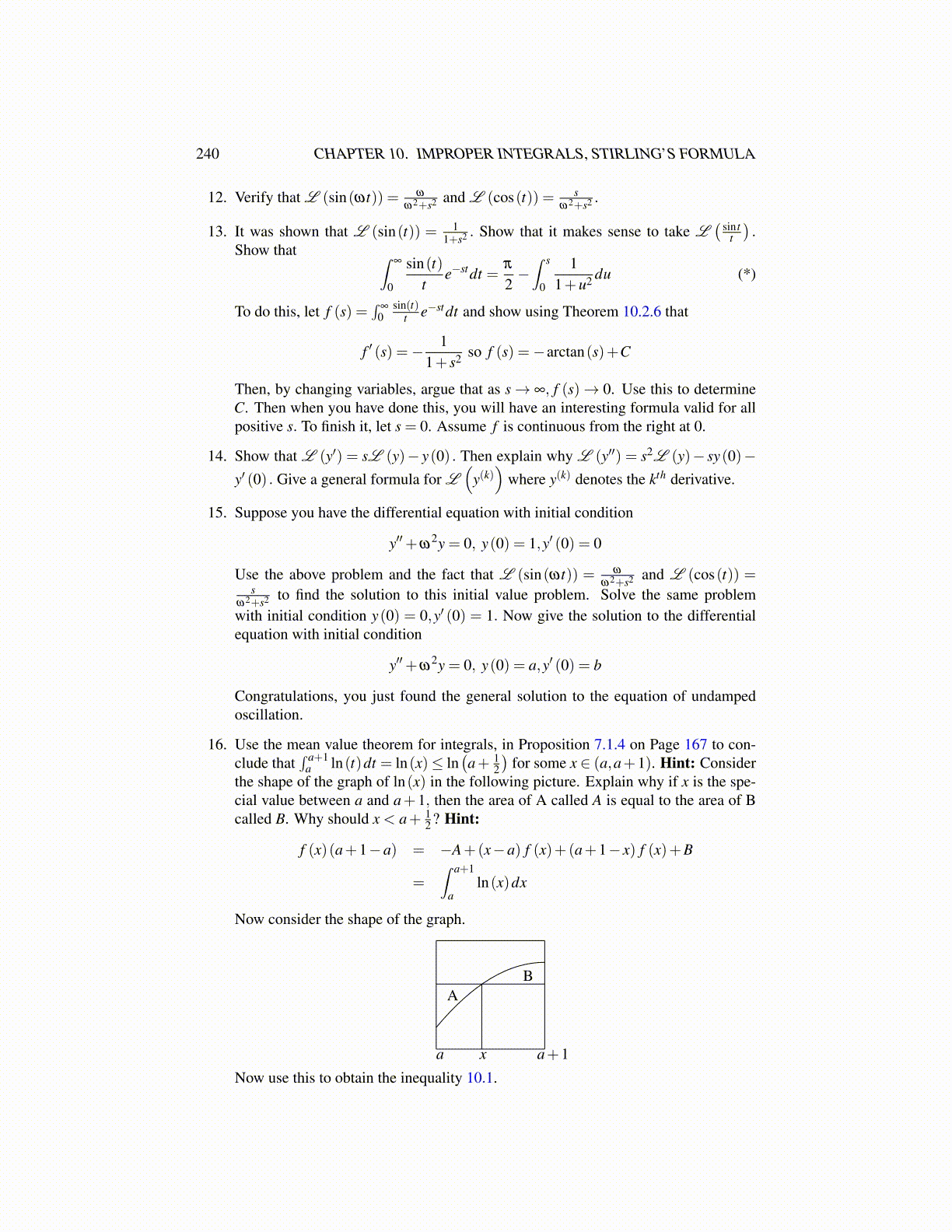
240 CHAPTER 10. IMPROPER INTEGRALS, STIRLING’S FORMULA
12. Verify that L (sin(ωt)) = ω
ω2+s2 and L (cos(t)) = sω2+s2 .
13. It was shown that L (sin(t)) = 11+s2 . Show that it makes sense to take L
( sin tt
).
Show that ∫∞
0
sin(t)t
e−stdt =π
2−∫ s
0
11+u2 du (*)
To do this, let f (s) =∫
∞
0sin(t)
t e−stdt and show using Theorem 10.2.6 that
f ′ (s) =− 11+ s2 so f (s) =−arctan(s)+C
Then, by changing variables, argue that as s → ∞, f (s)→ 0. Use this to determineC. Then when you have done this, you will have an interesting formula valid for allpositive s. To finish it, let s = 0. Assume f is continuous from the right at 0.
14. Show that L (y′) = sL (y)− y(0) . Then explain why L (y′′) = s2L (y)− sy(0)−y′ (0) . Give a general formula for L
(y(k))
where y(k) denotes the kth derivative.
15. Suppose you have the differential equation with initial condition
y′′+ω2y = 0, y(0) = 1,y′ (0) = 0
Use the above problem and the fact that L (sin(ωt)) = ω
ω2+s2 and L (cos(t)) =s
ω2+s2 to find the solution to this initial value problem. Solve the same problemwith initial condition y(0) = 0,y′ (0) = 1. Now give the solution to the differentialequation with initial condition
y′′+ω2y = 0, y(0) = a,y′ (0) = b
Congratulations, you just found the general solution to the equation of undampedoscillation.
16. Use the mean value theorem for integrals, in Proposition 7.1.4 on Page 175 to con-clude that
∫ a+1a ln(t)dt = ln(x)≤ ln
(a+ 1
2
)for some x ∈ (a,a+1). Hint: Consider
the shape of the graph of ln(x) in the following picture. Explain why if x is the spe-cial value between a and a+1, then the area of A called A is equal to the area of Bcalled B. Why should x < a+ 1
2 ? Hint:
f (x)(a+1−a) = −A+(x−a) f (x)+(a+1− x) f (x)+B
=∫ a+1
aln(x)dx
Now consider the shape of the graph.
AB
xa a+1
Now use this to obtain the inequality 10.1.